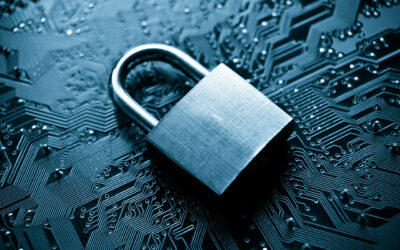Is your password secure enough?
Most Internet users are already well-versed in the basics of password security. However, you might be surprised to hear that, despite advice from cyber security professionals, millions of people continue to use hackable passwords for their online accounts. Why?
Well, the truth is that many of us simply don’t believe that we will be the next target for a cyber security attack. We brush off the constant nagging about updating our passwords because we’re either too lazy to put in the two minutes it would take to make the change, or too lazy to even attempt to memorise a new set of characters and numbers (definitely not words or names, right?)
But the ugly truth is that although most websites are secure, there is always a chance that someone might try to access or steal your information — and when that happens, you’ll probably be kicking yourself for not putting in that effort. In 2017, 81% of cyber breaches were the result of stolen or weak passwords.
So how do you beat the hackers? And how can you be certain that your new password is actually secure?
We’ve put together 5 simple tips for improving your password security:
1. Create strong passwords
A strong password should include a mix of upper and lowercase letters, numbers and special characters. Avoid using common real words or common phrases from pop culture, and don’t bunch up the numbers or symbols at the beginning or end of the password! Length is also extremely important— once you get into the 12-15 character range, it becomes much more difficult for a hacker to brute force your password.
2. Avoid personal information
Never use personal information (your name, children’s names, dates of birth, etc.) within your password. These types of passwords can be easily compromised, especially if details of your personal life can be found online through social media.
3. Don’t trust your browser
You might want to think twice about letting your browser remember your passwords for you. Although it can be convenient, any intruder who has gained unrestricted access to your computer can view and copy all of your saved passwords just by visiting your browser’s settings page.
4. Use two-factor or multi-factor authentication
It sounds complicated, but multi-factor authentication (MFA) simply means that, instead of using a single username and password, a security system verifies a user’s identity by requiring multiple credentials. Examples of MFA include codes sent to an email address or smartphone, fingerprints, facial recognition, answers to personal security questions and more. You can usually find this option in the account settings or security settings of your online service.
5. A password manager could be your saving grace
Although technology makes our lives easier, every new mailing list, online story and application that we sign up for is another set of usernames and passwords that we have to remember — and protect. For many of us, it can be extremely difficult to keep track of all of these passwords, which is why we end up using the same password for everything. And while using the same usernames and passwords for your online accounts can seem appealing, the trade-off is that you are creating a huge risk for your personal information and data to become hacked.

Fortunately, there’s an app for that. A password manager is a software application that can store and manage your online credentials. Some of them can even generate new and strong passwords for you! These passwords are stored in an encrypted database and locked behind a master password — and once you have stored your information into the virtual vault, you will only need to commit one password to memory. What a relief, right?
Remember: your login credentials are often the first line of defense against cybercriminals, so keep your online information safe and secure with these tips! Interested in learning more? Check out our blog on the basics of cybercrime and cybersecurity here.




